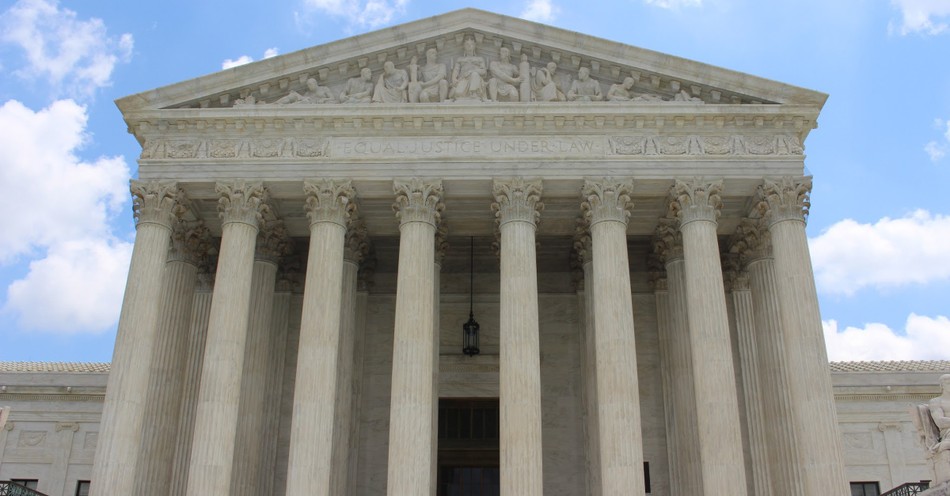Writing recently in the New York Times, Stanford Law School professor Michael McConnell takes an optimistic view, not only of the 2020 U.S. Supreme Court term, but of the court’s track record on religious freedom. “In 13 cases involving religion since 2012,” he writes, “the religious side prevailed in 12 of them, sometimes by lopsided majorities.”
This string of victories are part of what McConnell calls a “jurisprudence of pluralism” which, as he puts it, “seems to side with the party defending the right to live in accordance with one’s identity.” This includes “the right of a religious order to refuse to provide employees with coverage for contraceptive drugs that violate its teachings, or the right of religious schools to be free of government interference with their choice of people to teach religious doctrine or practice to their children.”
While it is certainly good news that Court recognizes the rights of religious institutions to be, well, religious, the “jurisprudence of pluralism” also includes, as we found out in this term’s Bostock decision, a newly discovered “right” for men to dress as women at their place of employment.
In other words, if this term of the Supreme Court reveals anything, it’s that it is committed to balancing religious freedom protections with honoring the “right to define one’s own concept of existence,” a concept infamously invented by Justice Anthony Kennedy in 1992. In my opinion, the Court is not succeeding at threading this needle.
Once again, the Court did protect the religious freedom rights of definitively religious institutions, something it’s been repeatedly clear about for years. However, the Court did not protect the religious freedom of religious individuals. Instead, the Court curtailed the conscience rights of employers by decreeing that sexual orientation and gender identity are essentially protected categories in Title VII of the Civil Rights Act.
Not only is this a net loss for religious freedom, it continues the erosion of religious freedom that Chuck Colson talked about 10 years ago. Religious freedom is not merely the ability to believe what you want in the privacy of your own head, your own home, and your own house of worship. Religious freedom is the ability to live out your faith in the public square, and to orient your public life, including your business, around your deeply held convictions.
By creating and elevating LGBT rights over employer rights in the Bostock decision, the Court has effectively drawn a hard, fast line (or, at least, a harder, faster line) between religious and non-religious entities when it comes to religious freedom. Therefore, the Supreme Court will now be forced to decide what counts as a religious institution and what doesn’t, something we’ve already seen federal, state, and local jurisdictions try to do.
For example, under President Obama, the Department of Health and Human Services only exempted religious institutions from its contraception mandate that did not serve anyone outside its belief system. By that definition, Catholic hospitals, Salvation Army homeless shelters, and church missions agencies would not qualify as religious institutions.
The situation is potentially worse now that religious rights have been compromised in Title VII of the Civil Rights Act. Title IX of the Civil Rights Act has to do with funding for educational institutions. Will Christian colleges that accept federal dollars be forced to accommodate the housing requests of same-sex couples, and allow biological men to reside in women’s dormitories and to compete on women’s sports teams?
Upstream from the Court, there’s also the ongoing cultural problem of defining religious liberty. As the Heritage Foundation’s Ryan T. Anderson tweeted, “The fact that there were 15 flagrant religious liberty violations that rose to the Supreme Court in a decade is not a sign of a winning streak at large (even at the Court) but [of a] new and heightened hostility” to religion.
He’s right. How else can one explain why Pennsylvania would take the Little Sisters of the Poor, a society of nuns, to court over the HHS mandate after the Sisters had already won against HHS at the Supreme Court? And, did the state of Montana really believe it could get away with discriminating against religious schools after the Court had ruled in favor of religious schools in the Trinity Lutheran case?
The ever-growing but still mistaken notion that faith is nothing more than matter of personal, private preference (or worse, a license to discriminate), rather than a fundamental right enshrined in the First Amendment, is upstream from the politics, the laws, and the Supreme Court decisions shaping our nation. This means that, in the short term, elections have consequences. In the long term, nothing short of re-catechizing our culture about the nature of faith and the fundamental good of religious freedom will do.
Today on the BreakPoint Podcast, Ryan T. Anderson unpacks with me the significance of this year’s Court decisions. Check it out at BreakPoint.org or subscribe to the BreakPoint Podcast wherever you subscribe to podcasts.
Publication date: July 20, 2020
Photo courtesy: Claire Anderson/Unsplash
The views expressed in this commentary do not necessarily reflect those of CrosswalkHeadlines.
BreakPoint is a program of the Colson Center for Christian Worldview. BreakPoint commentaries offer incisive content people can't find anywhere else; content that cuts through the fog of relativism and the news cycle with truth and compassion. Founded by Chuck Colson (1931 – 2012) in 1991 as a daily radio broadcast, BreakPoint provides a Christian perspective on today's news and trends. Today, you can get it in written and a variety of audio formats: on the web, the radio, or your favorite podcast app on the go.









